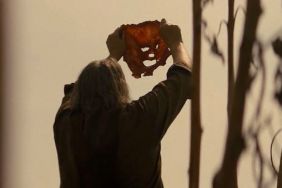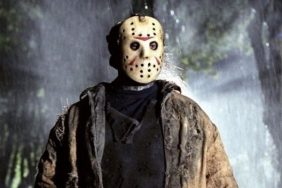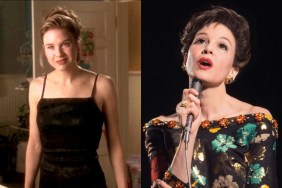South by Southwest is primarily a venue for discovering new films and new talent, but like any great film festival, they have a repertory portion as well. This year the festival included Gojira, and the restored 40th anniversary print of The Texas Chainsaw Massacre. The restoration brought director Tobe Hooper to Austin for the screening, and the following afternoon I got a few minutes to speak with him in the bar at the Driskill, one of the most popular hotels for SXSW meetings. While other parties were negotiating deals for their first films nearby, I was sitting with a filmmaker who made a bona fide classic we’ve been talking about for 40 years. It actually turned into a very technical interview as Hooper discussed the film stock he shot Texas Chainsaw on, and I knew the difference between reversal and negative because of film school!
CraveOnline: Was it the restoration that was screened at SXSW?
Tobe Hooper: Yes.
How good do you actually want The Texas Chainsaw Massacre to look?
That’s an interesting question. Originally, I just wanted to save it because it was coming apart. The negative, the reversal stock had been stored improperly and the emulsion was lifting up. There was a Blu-ray made about seven years ago that started looking really good and different from the documentary look originally. Well, I want it to look good and I want it to sound good.
Isn’t the documentary quality, the idea that we’re getting a peak at something we’re maybe not supposed to see, part of the appeal of the film?
Well, but I feel that the found footage film is on its way out. It’s kind of over-exposed. Perhaps this was an early found footage look, because of the blow-up and the grain. There’s still grain in it and when I see the film in different theaters, it looks different and sounds different in every theater. I mean, all films do.
How many times have you seen The Texas Chainsaw Massacre after all these years?
While making it and in post-production, quite a few times. That kind of doesn’t count, but maybe ten times? Maybe less?
In 40 years, I would have thought you’d attended more screenings of it.
Probably I have. I just don’t know but not as many times as some other films I’ve made. Certainly not as many times as other directors’ films that I’ve watched and watched over and over again.
Which of your films have you seen more?
I don’t know. I just don’t know.
Maybe Poltergeist?
Yeah, yeah, yeah. I’ve seen that quite a few times. Salem’s Lot, the four-hour version, I think I’ve seen that a lot.
Shooting on reversal film, how antsy were you to protect the footage while you were shooting? I would be so nervous it would get lost as your only original copy.
Well, I had work prints and I’d been doing documentaries and TV commercials on reversal for a long time. It is delicate. It will love to have a fingerprint on it. It was scary in that everything that could go wrong did. Like I mixed it at Todd-AO and Buzz Knudson, Academy Award winner, he mixed The Sound of Music, he mixed The Exorcist, My Fair Lady. He mixed it and I finished the mix and came back, and some film students were doing the A/B roll for invisible splices.
There’s an old rule, you always scrape picture and never black leader to make the splice, the join. So it runs through the printer twice. The first time it goes through, it has unexposed parts. Then the B roll goes through and the shots fit in the unexposed parts. In 16mm it was the only way to get invisible splices.
Anyway, they did it ass backwards and scraped black and not picture through 3/4 of the film. Then I had to go back and remove a frame except the perfect frames that I couldn’t lose, and I had to recut all the sound effects, all the music, all the dialogue so everything would be in sync again. Then I had to go back out and Buzz Knudson at Todd-AO had to mix it for a second time.
One scene, the dinner table scene, the lab processed it and I thought I’d been working with a dirty work print, but when it went through the bath, it was old, the chemicals. Parts of the emulsion floated around and affixed itself to the base side of the film. I thought, “This is it. It’s over.” I found a retired editor in L.A. who had a way with a Q-tip of cleaning every frame of that seven-minute scene.
Then I found out there was this old movie business legend that anything that is that hard to get on the screen will make an impression. I wasn’t afraid, which I think was your question. I should have been because all that could go wrong did go wrong.
Did The Texas Chainsaw Massacre set up a tough act for you to follow?
Yes. Yes, it did.
How did you face that and move forward?
I just had to live with it. I had to make sure that I got something else that was impressive enough. I think that was Salem’s Lot because it got Emmy nominations. It got nominated and was very successful, but yes, Bill Friedkin who brought me out to L.A. and got a development deal with Universal, said, “You should’ve made a couple of bad films first.”
When you got to work on Poltergeist with all of the trappings of a big studio movie with Steven Spielberg producing, was it a relief to have that protection after the down and dirty films?
Yeah, it was. It meant that I had more time and more understanding, more protection from the execs wanting to cram exposition in. The kind of exposition that you see in films today that there’s no reason. You’re having no experience at all. They want to make sure you understand.
I never got that. All they need to do is get you into the theater. If you don’t understand it after you’ve paid for your ticket, who cares?
Right, who cares if they get you in there? I think it’s best to have layers of narrative that you marry together in your head. That way you’ll talk about the movie. You’ll go away thinking about it but continue to put things together yourself.
Texas Chainsaw Massacre really started the slasher movie. Some of the other memorable ones were Freddy, Jason, Michael Myers, Chucky. Who were some of your favorites who came after Leatherface and the family?
I haven’t seen many. I like Michael Myers. You can’t help but be fond of Freddy, not because of the genesis of Freddy but because of Robert Englund and his glove and his one-liners.
He’s so theatrical in that performance.
Very theatrical.
And you directed the pilot of the TV show “Freddy’s Nightmares.”
I did, yes. I did.
Fred Topel is a staff writer at CraveOnline and the man behind Best Episode Ever and The Shelf Space Awards. Follow him on Twitter at @FredTopel.









